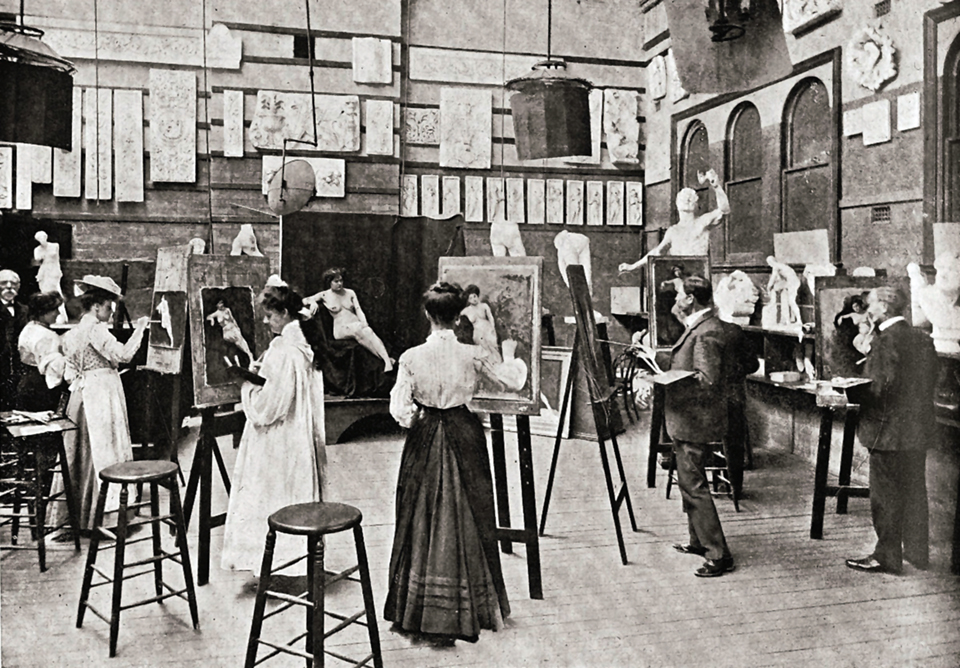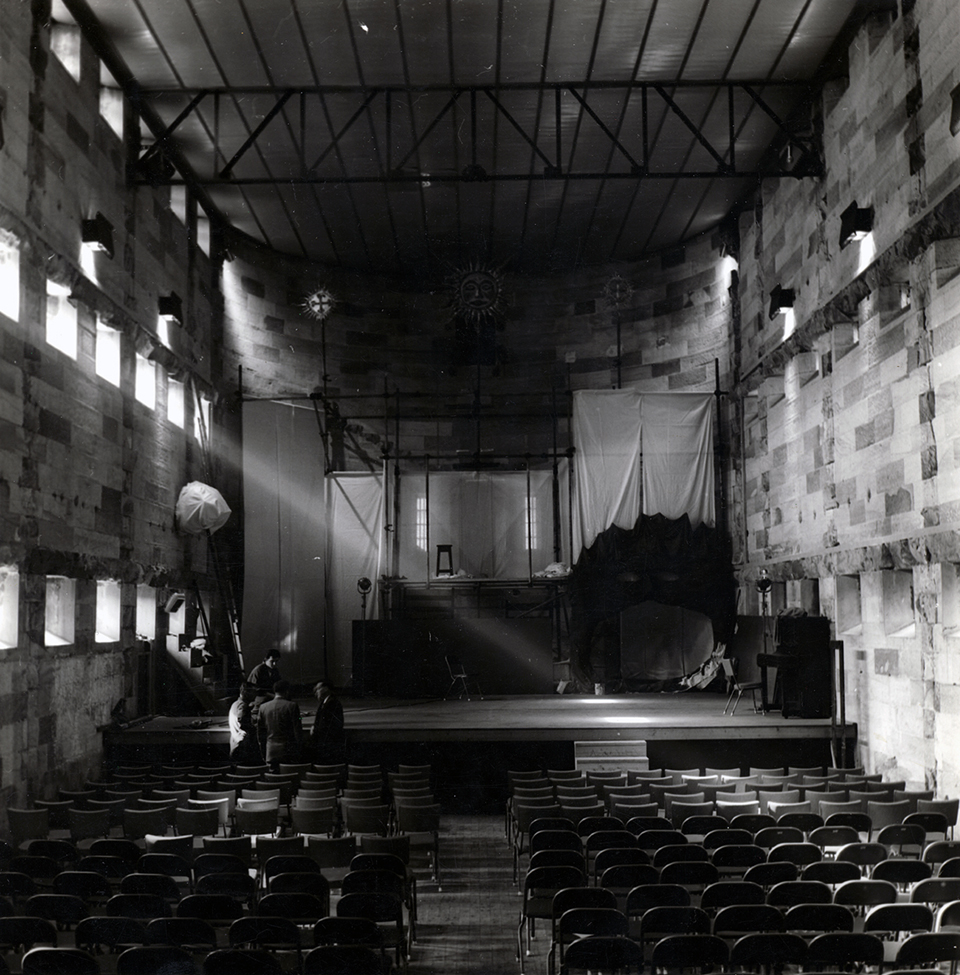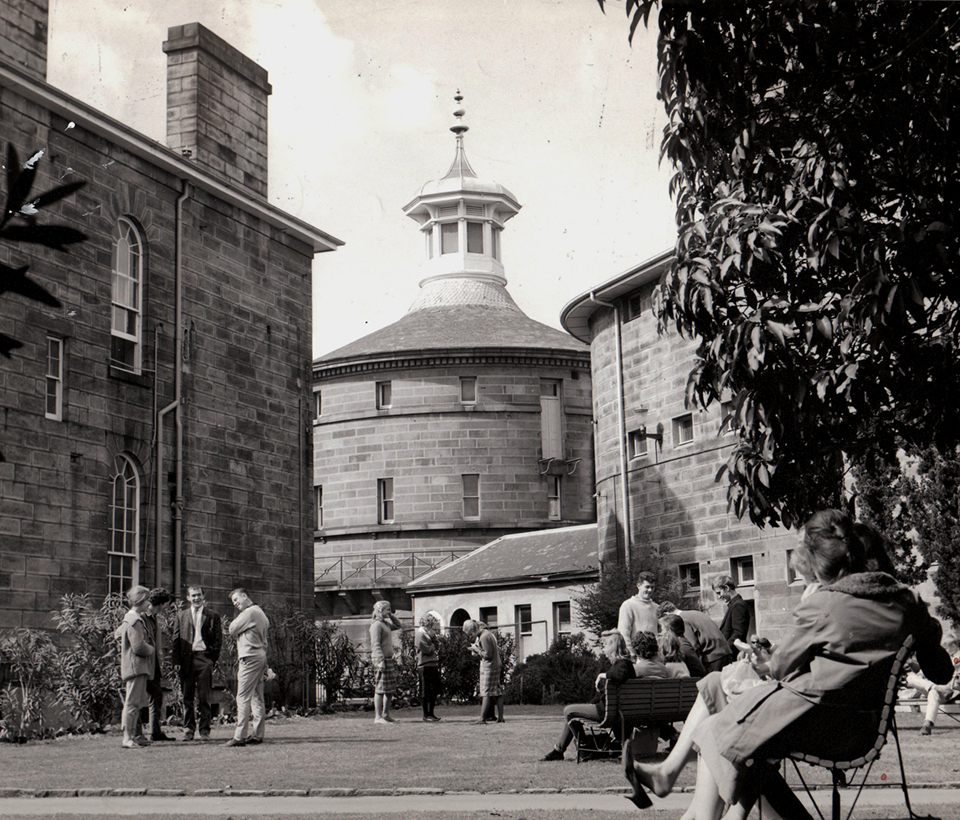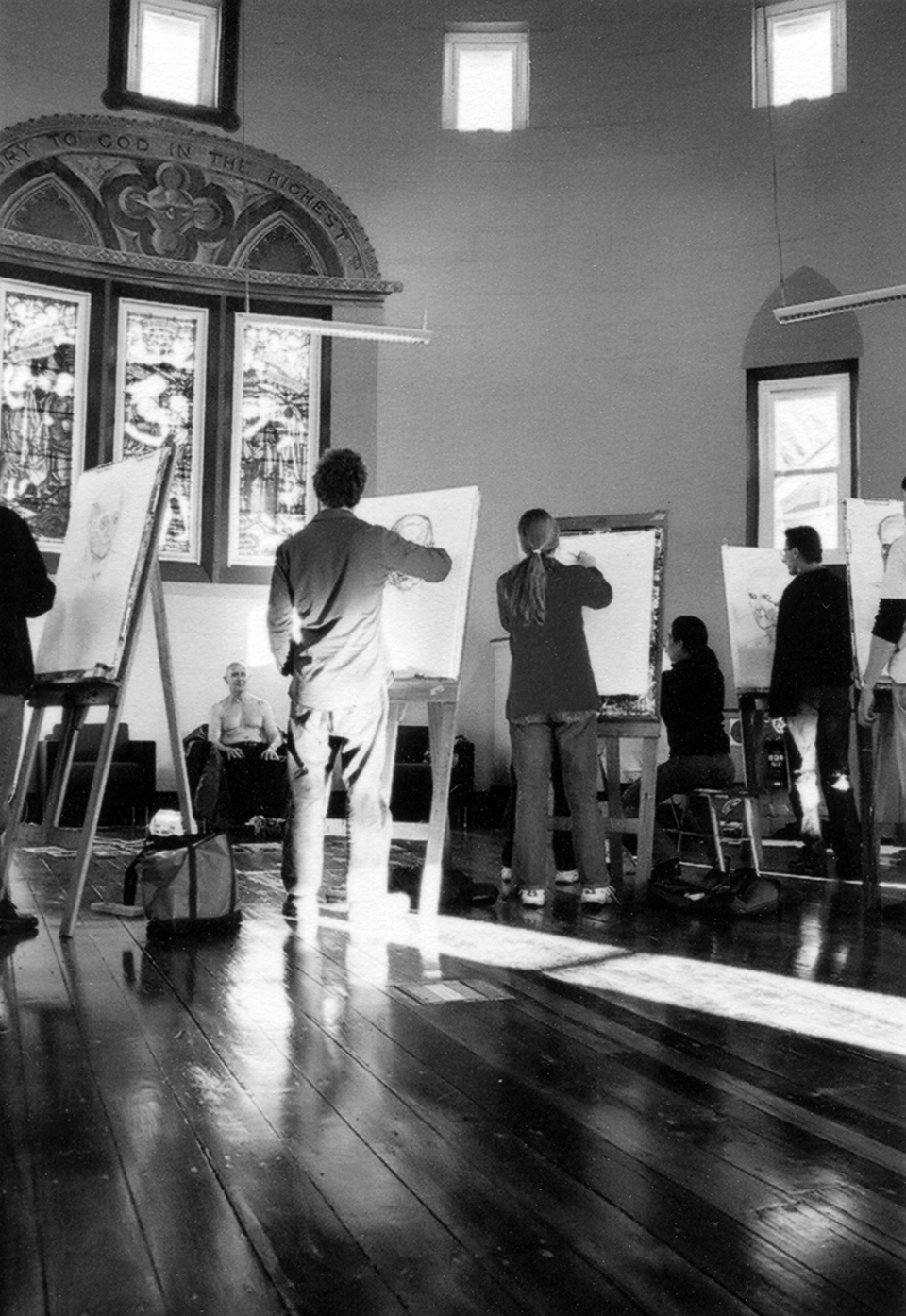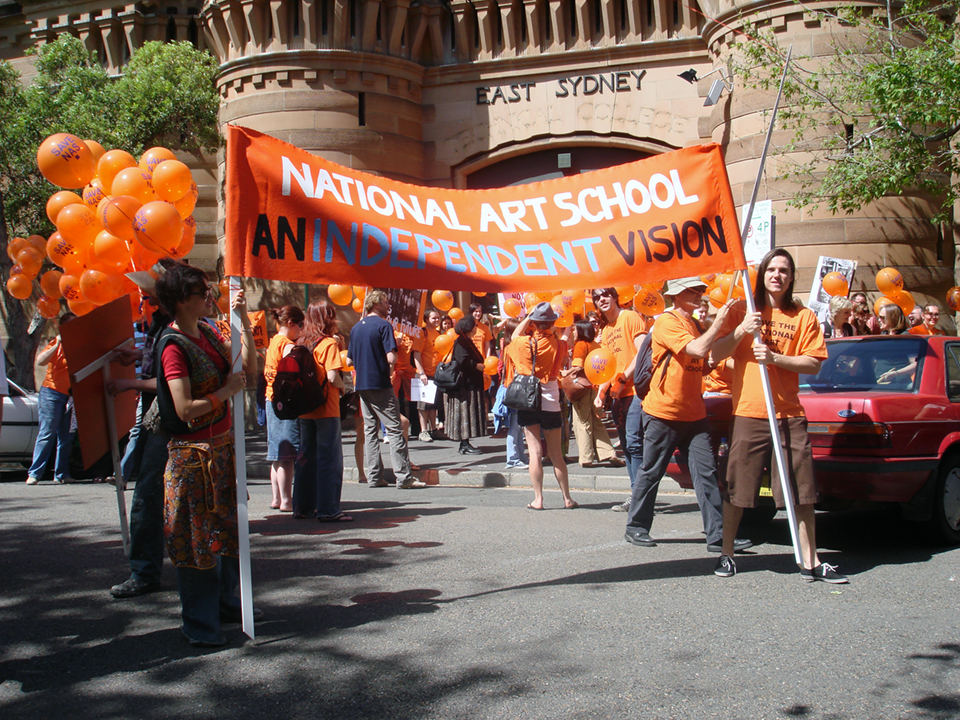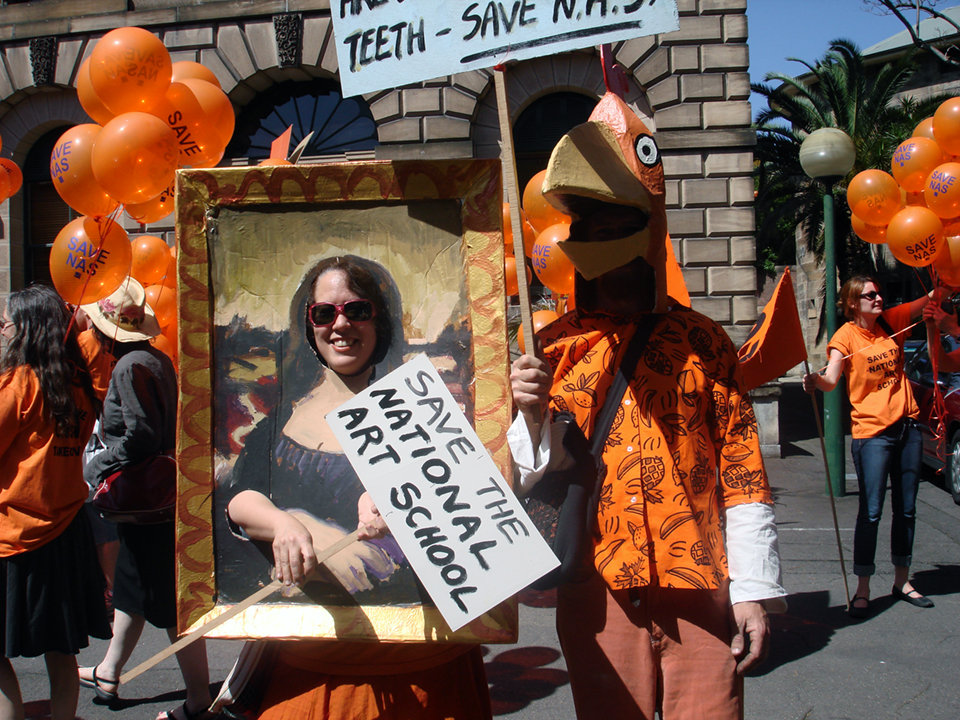The Dictionary of Sydney was archived in 2021.
National Art School
Citation
Persistent URL for this entry
To cite this entry in text
To cite this entry in a Wikipedia footnote citation
To cite this entry as a Wikipedia External link
National Art School
[media]The National Art School has been at the centre of Sydney's art scene for almost a century, and has nurtured the talents of generations of artists who have studied and worked in studios within the walls of the old Darlinghurst Gaol. Its site and educational philosophy have made the National Art School a unique institution which encourages major artists to teach ambitious students in small classes.
Department of Art at the Working Men's College
[media]The National Art School is one of the oldest ongoing art institutions in Australia, and has a chequered and complex history, which can be traced back to the establishment of the Sydney Mechanics' School of Arts in 1833.
The development of the art school is intertwined with the story of Sydney Technical College and the Sydney Mechanics' School of Arts. The first lecture on the principles of drawing by John Skinner Prout took place in 1843. In 1854, Joseph Fowles was engaged as a drawing teacher, and in 1873 the Department of Art was set up in the School of Arts building in Pitt Street, offering courses in technical and fine art drawing, as well as training in drawing for primary school teachers. [1] Drawing skills had been valued as a way of documenting the new colony from its inception, and from 1878 the Department of Art formed a vital part of the Technical and Working Men's College established by the Sydney Mechanics' School of Arts.
The first instructor in the art department was the exiled Frenchman Lucien Henry, who had received a death sentence during the Paris Commune in 1871. His sentence was commuted to seven years exile in New Caledonia, after which he made his way to Sydney, arriving in 1879. Henry had trained at the Ecole des Beaux-Arts in Paris, and brought many elements of the curriculum of this institution to the art school in Sydney, where he taught freehand drawing, design and modelling. He encouraged his students to introduce Australian flora and fauna into their designs and artwork, and, in the late 1880s began working on a mammoth book, Australian Decorative Arts, which he conceived as 'the foundation for a National School'. [2]
In 1883, the Technical and Working Men's College was taken over by the government-appointed Board of Technical Education. It came to be known as the Sydney Technical College, and in 1892 the art department moved to the College's new premises in Ultimo. Lucien Henry [media]had returned to Paris by this time, and by 1909, the Department of Art had grown to include courses in painting and sculpting from the model, pottery, landscape and life drawing, as well as technical subjects, offering a five-year course and regularly exhibiting student work. [3]
After World War I, Sydney Technical College expanded its courses and began to look for another site close to the city. Darlinghurst Gaol had closed in 1914, and there was much public debate about the use of this valuable site. Because of its previous history, many thought the sandstone gaol should be pulled down, but it was used as an internment camp by the Department of Defence from 1914 to 1918. During this time the buildings were neglected and badly damaged.
Move to 'the Tech'
In 1919, James Nangle, Superintendent of Technical Education, and Thomas Mutch, Minister for Public Instruction, lobbied to use the old Darlinghurst Gaol buildings as an annexe of Sydney Technical College, and in October 1920 it was decided to convert the derelict buildings into an educational institution. This inspired decision saved the threatened buildings, and created a unique creative environment which would have a remarkable effect on the students who would come to study at the art school. Adapting a gaol complex into an educational institution was an enormous task. [media]The internal sandstone walls needed to be removed, gaol windows were enlarged, and in some cases the internal structures of the gaol wings were completely renovated to make three levels into two. In 1922, the Department of Art was moved from Ultimo to the Darlinghurst Gaol site (then called East Sydney Technical College), occupying five buildings alongside other departments from Sydney Technical College, such as women's handicrafts, the sanitation and hygiene school, the sheep and wool school and the domestic science school. Facilities such as the canteen and library were shared, and the school as a whole became known as 'The Tech'. East Sydney Technical College remained an annexe of Sydney Technical College until 1955.
The first 'Lecturer in Charge' of the 'Elementary and Applied Art Department' at East Sydney Technical College was Samuel Rowe, [4] but it was the arrival of the flamboyant and influential English [media]sculptor G Rayner Hoff in 1923, that saw the art department gain a new impetus, and Hoff helped to establish the new five-year Diploma course in 1926. It was in this year that the name 'National Art School' was first mentioned in the catalogue for an Exhibition of Art by the students of East Sydney Technical College. In an outline of the history of the art school in this catalogue, Samuel Rowe's appointment was discussed:
Mr Rowe, a designer of great ability, soon realised that if the Art Department was to function properly, and fulfil its mission as the National Art School, it must obtain young teachers of outstanding ability. [5]
However, the name 'National Art School' does not appear in the handbook until 1935, listed under 'Department of Art', in the same year that Rayner Hoff became Acting Lecturer in Charge. [6] Hoff continued as a teacher of modelling and sculpture, and set up a large studio in one of the converted gaol buildings. He employed students to work on his public commissions, including the Anzac Memorial sculptures, now an integral part of the Anzac War Memorial in Hyde Park. The sculpture department benefited greatly from the influence of Hoff, who established a strong master-pupil studio practice and taught future artists and teachers such as Lyndon Dadswell, Barbara Tribe, Arthur Murch and Eileen McGrath. [7]
A new generation
With Hoff's untimely death in 1937, the name 'National Art School' disappeared from the handbooks until 1956. The Art Department continued to function during World War II, with smaller enrolments of predominately female students, including Margaret Olley. The balance was tipped to mostly male students after the war, when many demobilised servicemen and women chose to study art at the Tech under the Commonwealth Reconstruction Training Scheme (CRTS). [8] Determined to make up for lost time after their war service, this group of highly motivated and talented students included Tony Tuckson, Robert Klippel, Guy Warren, Tom Bass, Bert Flugelman and John Coburn. Many later gained recognition in the Sydney art world, and made a large contribution to Australian cultural life through their art and teaching.
The 1950s and 1960s saw a period of consolidation at the art school, with swelling numbers of Diploma students and an enormous influx of evening students. Especially popular were the evening ceramics classes, with prospective students queuing for hours down Forbes Street during enrolment week. Lifelong friendships were formed, and the social life of the school included student revues, group painting trips and the legendary art student balls. [media]The opening of the Cell Block Theatre in 1958 saw students become involved in the music, dance and theatre productions which were regularly performed there. The original women's gaol block had not been converted as part of the Technical College in the1920s, so by 1958 it was the only intact gaol wing on site, and it became an impressive theatre and gallery space, where many experimental companies held premieres and students and teachers from the art school exhibited their work.
The focus of the National Art School on the 'atelier method' of teaching, which had evolved during Rayner Hoff's time, was reinforced during this period. Drawing formed the core of the program and small classes were taught by practicing artists who were leaders in their fields. Influential teachers such as Lyndon Dadswell, Douglas Dundas, Godfrey Miller, John Passmore, Frank Hinder, Phyllis Shillito, Ralph Balson and William Dobell all taught at the school during the postwar period, and many of their students later returned to become teachers themselves.
The five-year Diploma syllabus introduced in the 1920s remained in place until 1971, when it was reduced to four years, with many students completing their preliminary years at 'feeder' technical colleges such as Meadowbank and Newcastle. [9] [media]The last three years of the course were completed at the East Sydney campus.
Threats and changes
The National Art School appeared to be going strong when an exhibition was held in 1974 to celebrate the fiftieth anniversary of its move to the East Sydney site – but it was this year that proved to be almost fatal for the school. [10] The list of artists in this show reads like a 'who's who' of the Australian art scene up to the 1970s, and in the catalogue essay Peter Brown describes the strong tie the artists felt with the site:
… the extraordinary and compelling power of those silent sandstone buildings: the calm of the man-made spaces: the sun-trapped corners and pools of warm light – all of which possess a powerful hold over the imagination, and vary in emphasis and degree with each individual. [11]
It is this power that engendered the intense and heart-felt fight put up by students and staff when moving the art school from the East Sydney campus was proposed by the Department of Technical and Further Education (TAFE). Marches on Parliament House were organised in 1974, but by the beginning of 1975, the National Art School had been decimated, with the Division of Fine Art taken under the umbrella of a new College of Advanced Education called Alexander Mackie College in Paddington (later known as the City Art Institute and now the College of Fine Arts or COFA). The Division of Design became the basis for the College of Advanced Education named Sydney College of the Arts, originally housed in various premises around Balmain, and from 1996 housed in the historic Kirkbride buildings in Rozelle. With much protestation, art students were moved off the site into the new CAEs in 1975, and many teachers from the National Art School were offered positions in these colleges. The National Art School became the foundation for the three major art schools in Sydney today – the National Art School itself, COFA (now part of the University of New South Wales) and Sydney College of the Arts (part of the University of Sydney).
Although it appeared that the fight to stay on the East Sydney site had been lost, the art course continued to run at the Tech in a much diminished 'School of Art and Design', which offered a two-year certificate – a far cry from the heady days of the 1960s. A small group of dedicated teachers stayed on at East Sydney, determined to reinstate the Diploma course. Due to their determination and the formation of Friends of the National Art School, the school was gradually rebuilt, and a three-year Diploma was offered in 1988.
Towards independence
This was not enough for the supporters of the National Art School, who believed that independence from TAFE was essential, especially with the introduction of the inappropriate 'competency-based' training standards in the mid-1990s. Indeed the more vocational emphasis of TAFE had been at odds with the ethos of the art school for some time.
After intense lobbying by many well-known figures from the art world, separation from TAFE was finally achieved in 1996, when Bob Carr became Labor Premier and honoured his promise of independence for the National Art School. With the appointment of a new director and staff, the sense of euphoria was palpable. There were great hopes for a strong and independent school based on studio practice which would continue to employ practicing artists to teach art students. The new courses included drawing as a core subject, and introduced a strong curriculum for art history and theory, while teaching skills in studio disciplines (painting, sculpture, printmaking, photography and ceramics) to equip students with a range of techniques and knowledge. The Bachelor of Fine Arts Degree was accredited in 1998, and classes for the new three-year course began in 1999. The National Art School was the only state-based institution to offer a degree.
Bob Carr's promise included funds for refurbishment of the buildings, and when the other TAFE departments moved offsite in 2005, the art school was finally the sole occupant. [media]With input from the New South Wales Government, many of the buildings were upgraded to include a state-of-the-art gallery in a converted cell wing, a new library in the old gaol hospital, and refurbishment of many of the old studios and the Cell Block Theatre.
A form of independence had been achieved, but the art school was still funded by the NSW Department of Education and Training (DET), and could not claim full freedom to manage itself. It remained an oddity in the DET directorate – its teaching methods and educational philosophy at odds with TAFE.
[media]In June 2006, three weeks prior to announcing his retirement, Premier Bob Carr announced that Expressions of Interest to transfer the school to one of Sydney's existing universities would be sought. Had this come about, it would have meant the loss of the identity of the National Art School that supporters of the art school had fought to maintain for so many years. Consequently, this move was vehemently opposed, with a strong campaign and more marches on Parliament House, which finally resulted in an announcement by Education Minister Carmel Tebbutt in 2007 that 'the NSW Government was terminating the Expression of Interest process for the transfer of the National Art School (NAS) to a university'. [12] [media]Instead, a task force was set up to investigate and report on options for the school's future. This committee, chaired by Sandra Yates, met for over a year, and its findings resulted in the recommendation that the National Art School be made a fully independent higher education provider. In 2009 Verity Firth, the Minister for Education, announced that the art school would be released from the management of the NSW Department of Education and Training and be registered as a public company with two shareholders, the Ministers for Arts and Education, with a new Board of Directors and Director of the School. [media]True independence has finally been achieved, and the National Art School continues to offer fine art degrees with intensive studio-based teaching in small classes, producing many successful students who contribute significantly to Australia's cultural development.
References
Deborah Beck, Hope in Hell: A History of Darlinghurst Gaol and the National Art School, Allen & Unwin, Sydney, 2005
Therese Kenyon, The Studio Tradition: National Art School 1883–2001, Manly Art Gallery and Museum, Manly NSW, 2001
Norm Neill, Technically and Further, Sydney Technical College 1891–1991, Hale and Iremonger, Sydney, 1991
Notes
[1] Christopher Allen, 'A Brief History of the National Art School', in Deborah Beck, Hope in Hell: A History of Darlinghurst Gaol and the National Art School, Allen & Unwin, Sydney, 2005, p 176
[2] Ann Stephen (ed), Visions of a Republic: the work of Lucien Henry, Sydney, Powerhouse Publishing, 2001, pp 66–68
[3] A Quarter Century of Technical Education in New South Wales, William Applegate Gullick, Sydney 1909, pp 143–155
[4] Handbook, Sydney Technical College, list of staff, 1922, p 4
[5] Historical Sketch, catalogue, Exhibition of Art by the students of East Sydney Technical College, 4–11 December 1926
[6] Handbook, Sydney Technical College, 1935
[7] Deborah Beck, Hope in Hell: A History of Darlinghurst Gaol and the National Art School, Allen and Unwin, Sydney, 2005, p 119
[8] Deborah Beck, catalogue essay, 'Out of the Line of Fire' in Lines of Fire: Armed Forces to Art School, NAS Gallery, July–August 2008, pp 8–25
[9] Christopher Allen, 'A Brief History of the National Art School', in Deborah Beck, Hope in Hell: A History of Darlinghurst Gaol and the National Art School, Allen & Unwin, Sydney, 2005, p 184
[10] 50 years of the National Art School: A retrospective exhibition of major works by past students and staff of the National Art School, Bonython Gallery, June 1974
[11] Peter Brown, 'The History of the National Art School', catalogue essay, 50 years of the National Art School, 1974
[12] New task force to plan future for National Art School, media release, The Hon Carmel Tebbutt, Minister for Education and Training, 24 January, 2007
.





